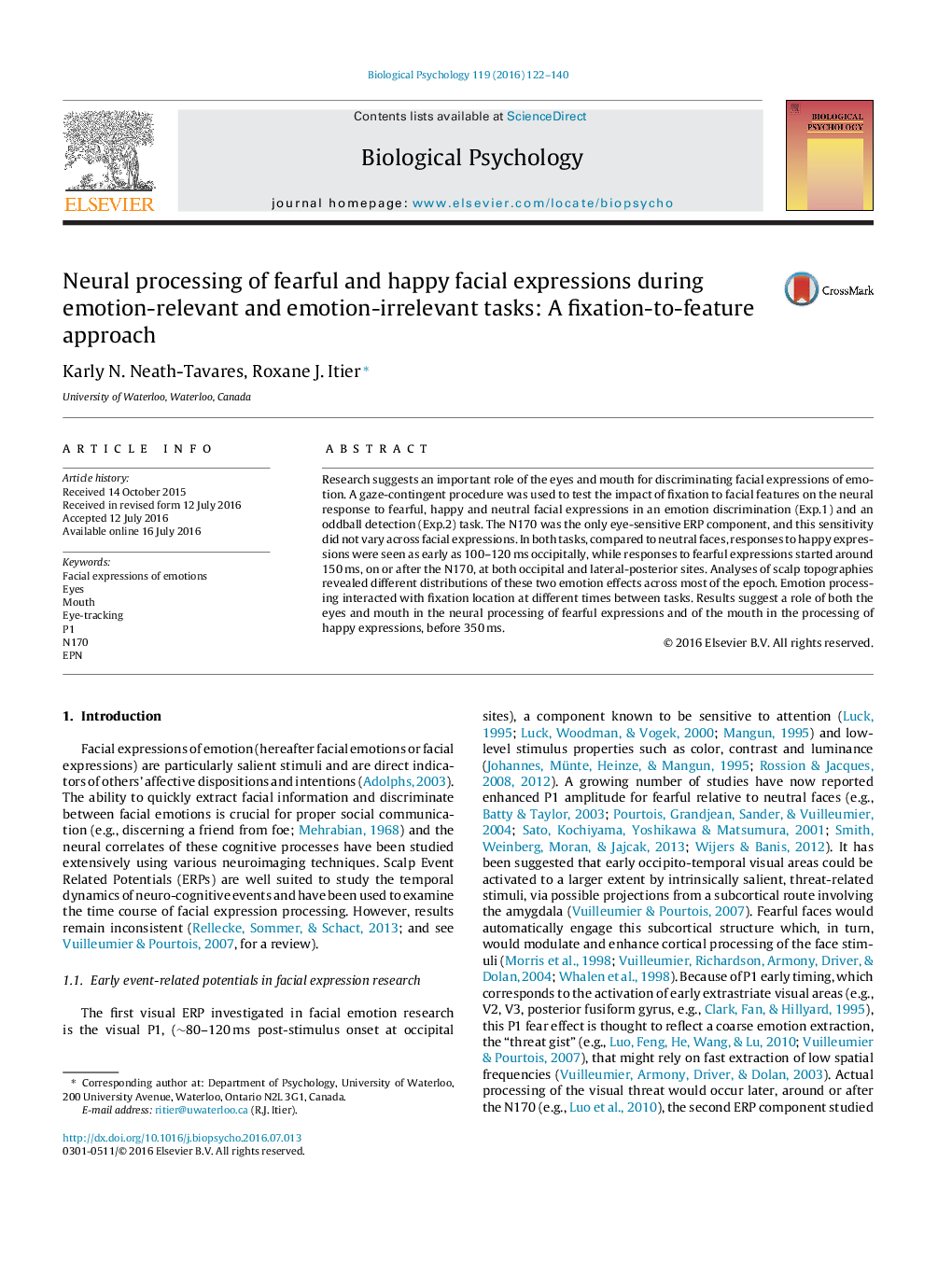| کد مقاله | کد نشریه | سال انتشار | مقاله انگلیسی | نسخه تمام متن |
|---|---|---|---|---|
| 920747 | 1473854 | 2016 | 19 صفحه PDF | دانلود رایگان |
• Early effect of happy expressions starting ∼100–120 ms at occipital sites.
• Later effect of fearful expressions starting ∼150 ms at posterior lateral sites.
• N170 is largest for eye fixation, independently of facial expressions.
• Effects of emotion involve different spatio-temporal networks.
• Different role of mouth and eyes in processing fearful and happy expressions.
Research suggests an important role of the eyes and mouth for discriminating facial expressions of emotion. A gaze-contingent procedure was used to test the impact of fixation to facial features on the neural response to fearful, happy and neutral facial expressions in an emotion discrimination (Exp.1) and an oddball detection (Exp.2) task. The N170 was the only eye-sensitive ERP component, and this sensitivity did not vary across facial expressions. In both tasks, compared to neutral faces, responses to happy expressions were seen as early as 100–120 ms occipitally, while responses to fearful expressions started around 150 ms, on or after the N170, at both occipital and lateral-posterior sites. Analyses of scalp topographies revealed different distributions of these two emotion effects across most of the epoch. Emotion processing interacted with fixation location at different times between tasks. Results suggest a role of both the eyes and mouth in the neural processing of fearful expressions and of the mouth in the processing of happy expressions, before 350 ms.
Journal: Biological Psychology - Volume 119, September 2016, Pages 122–140
